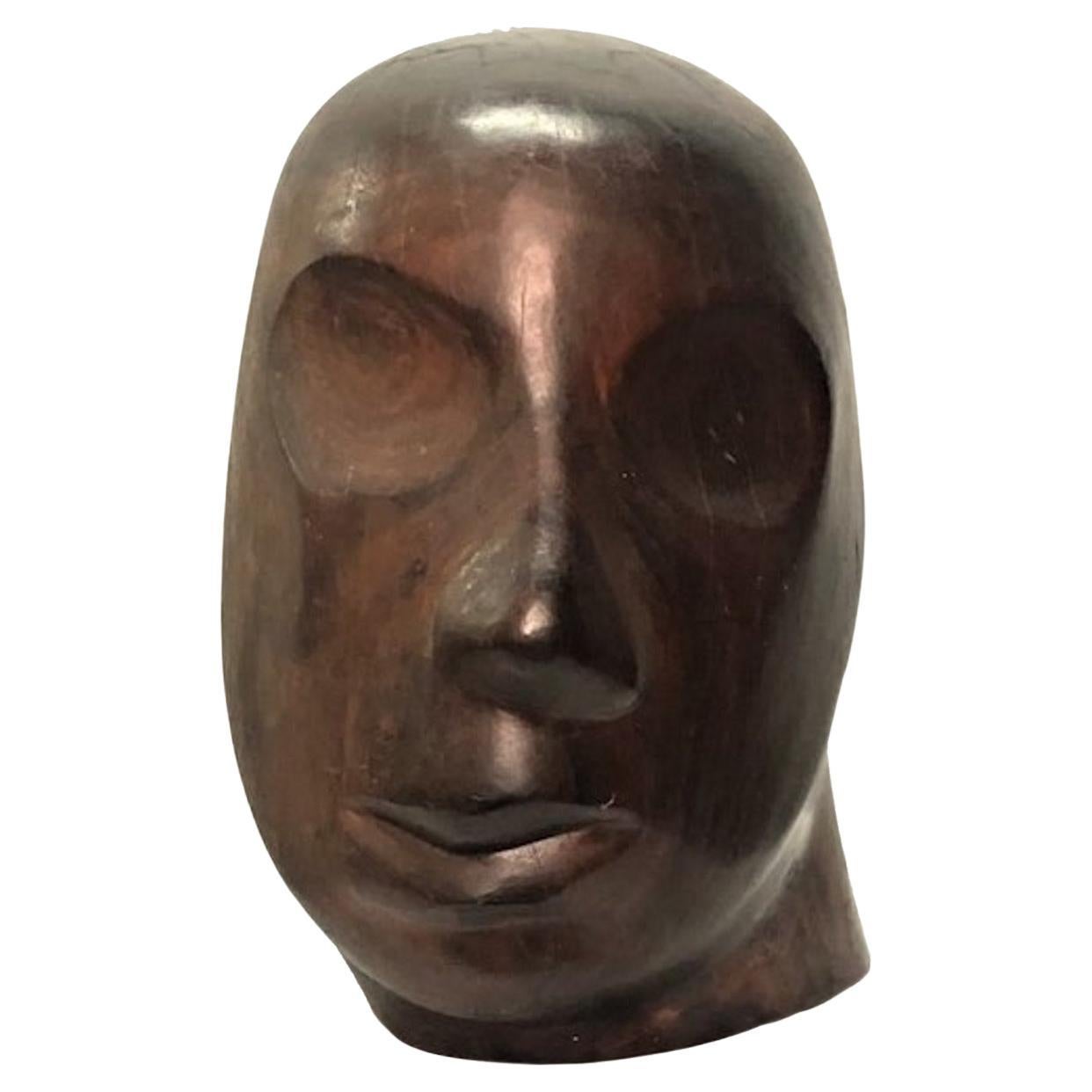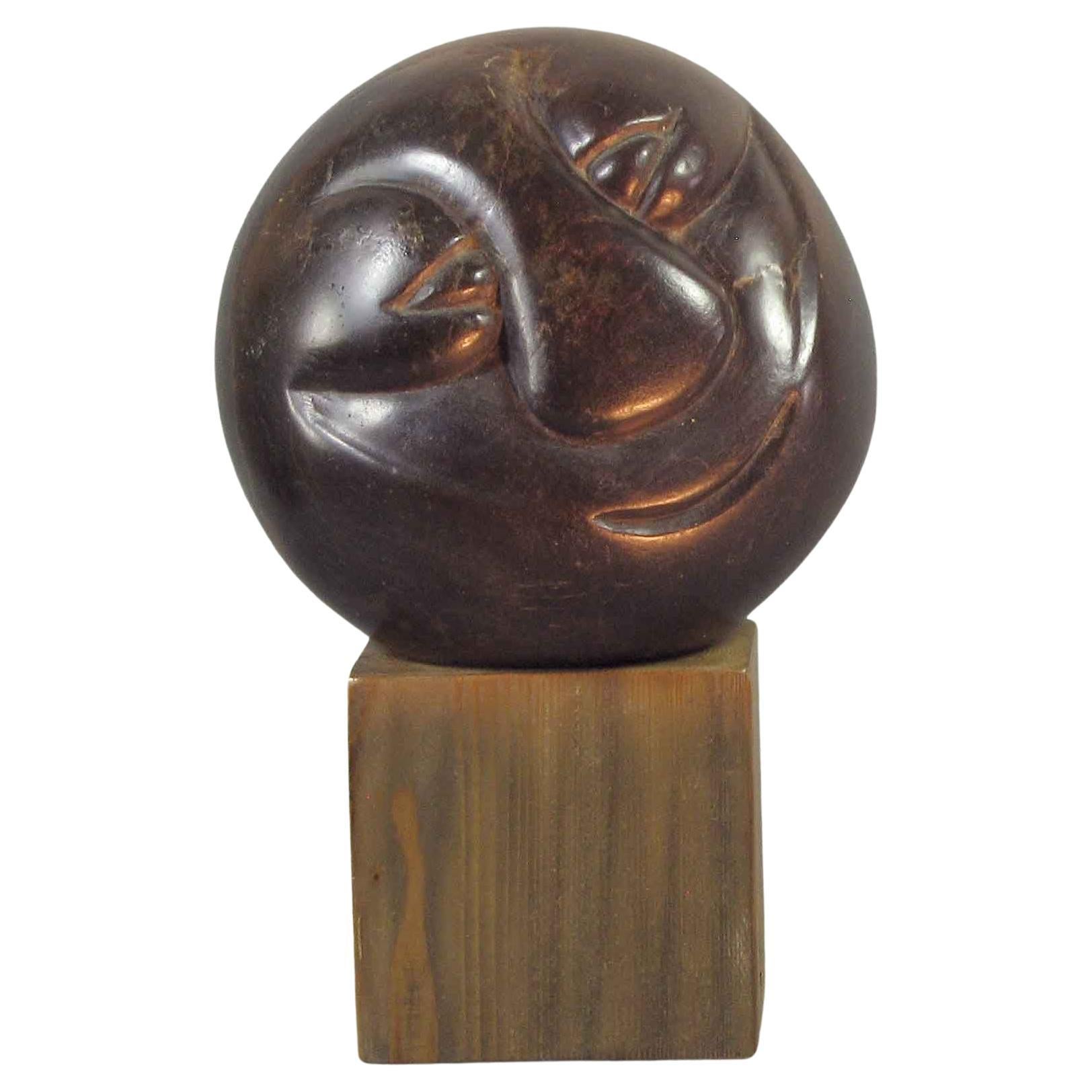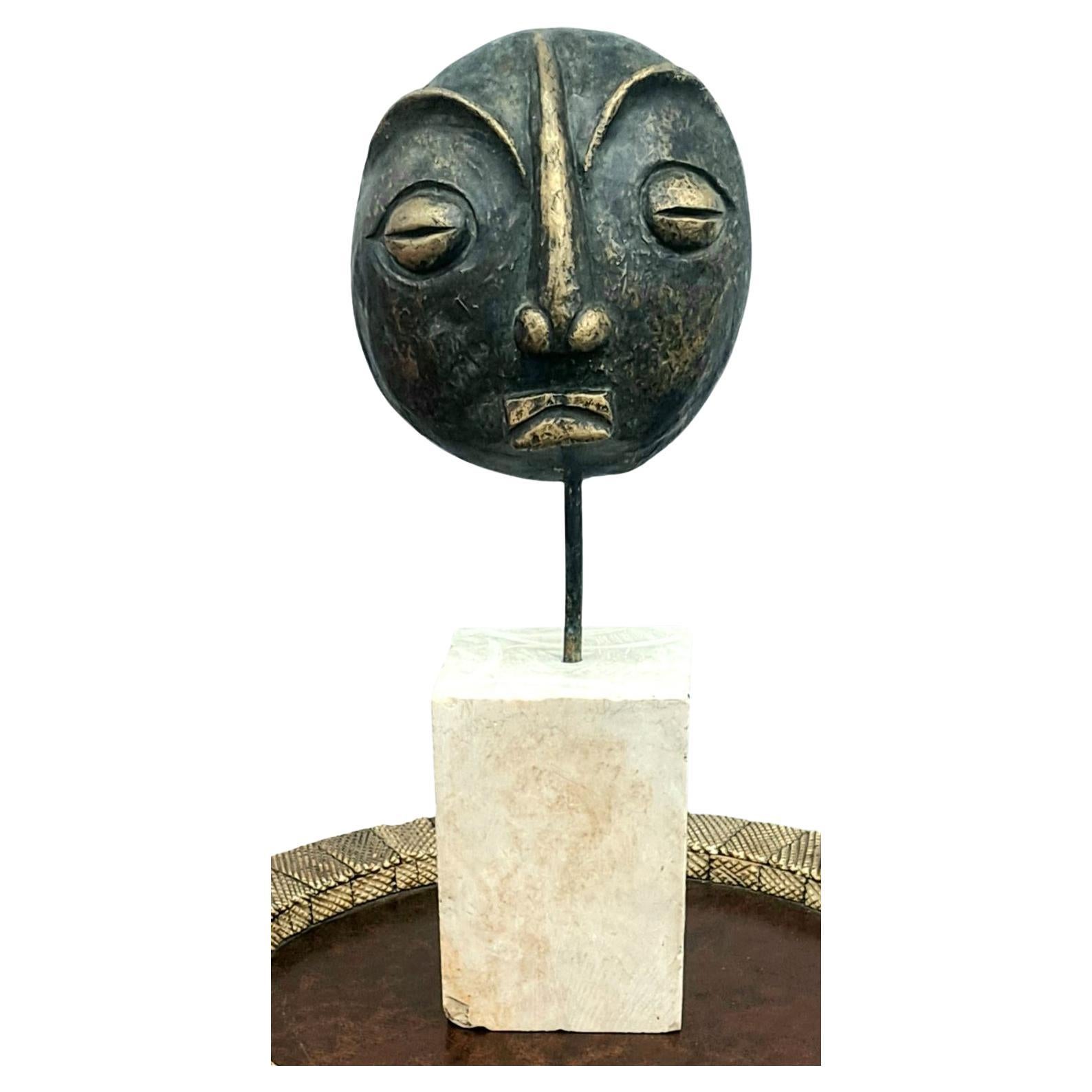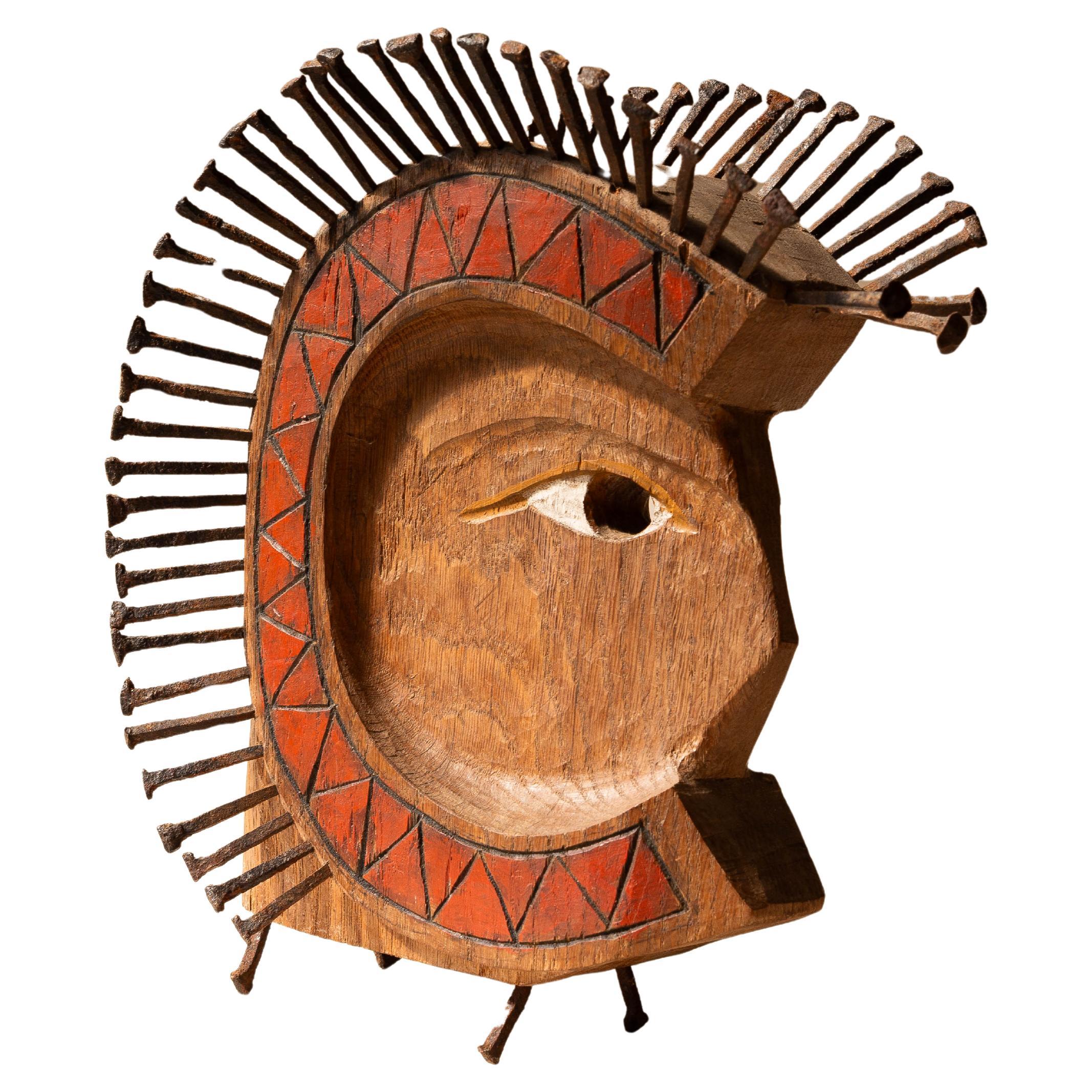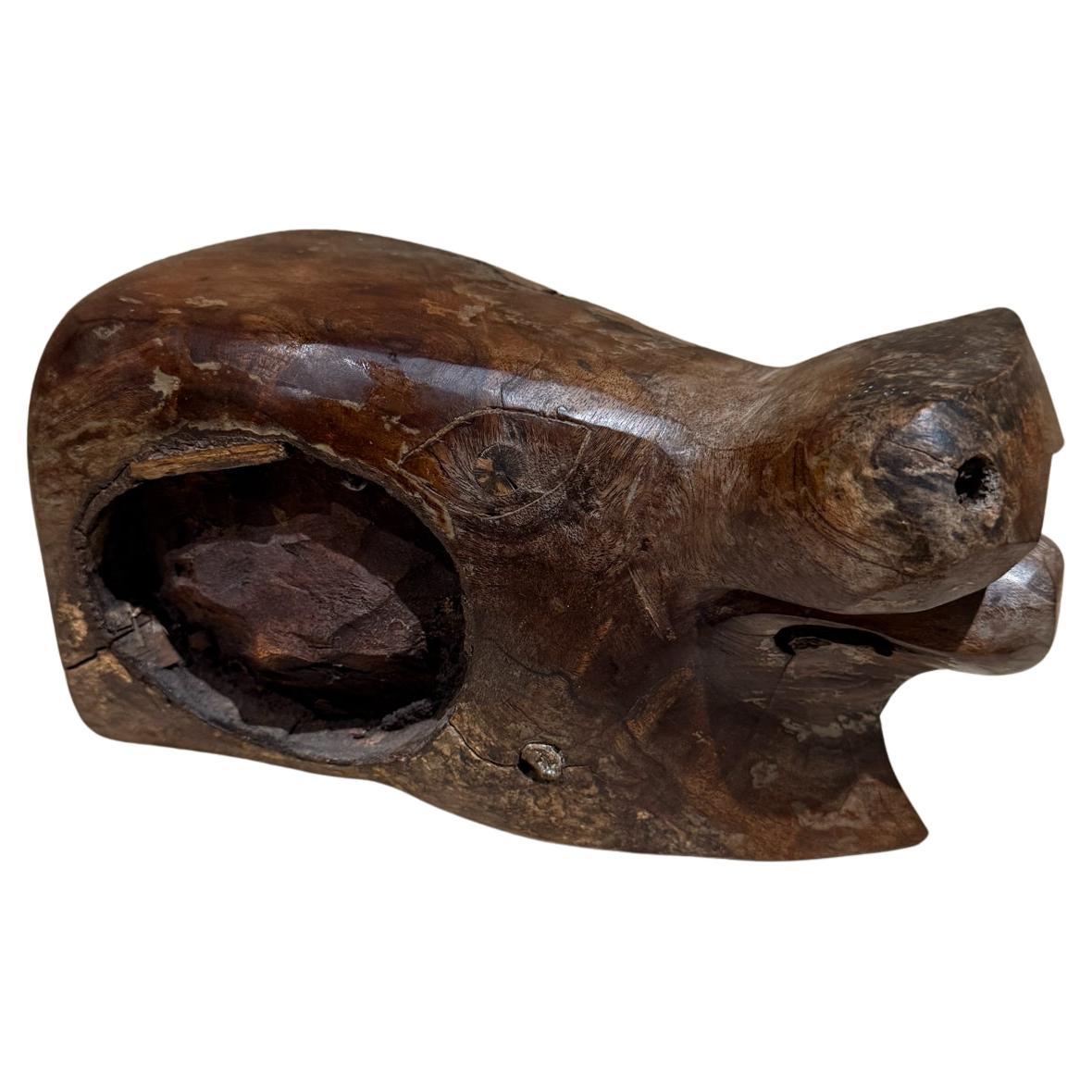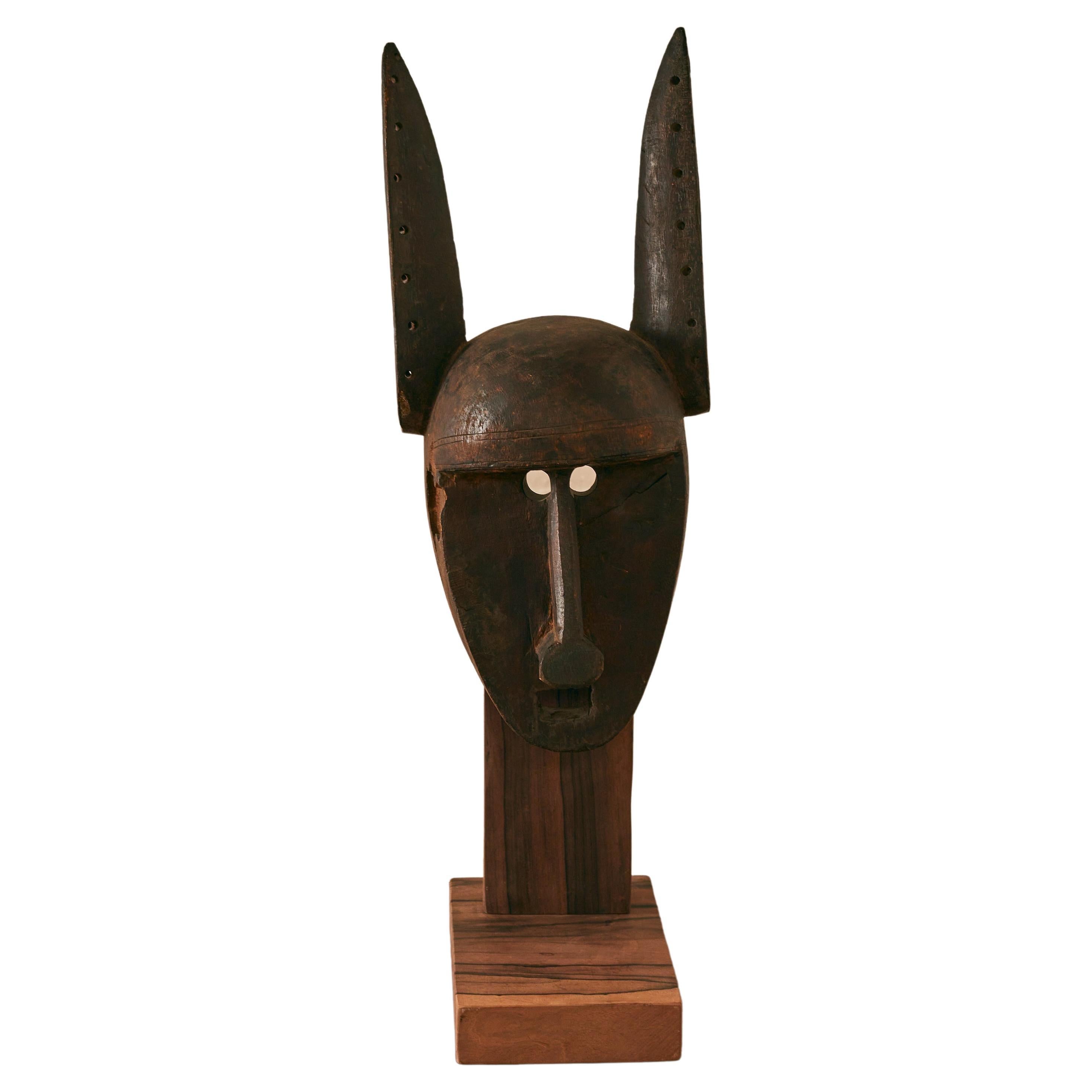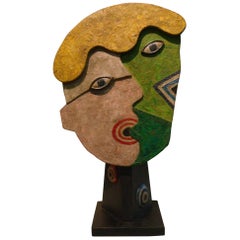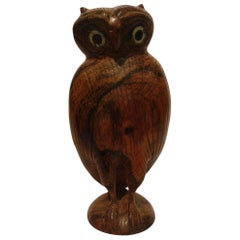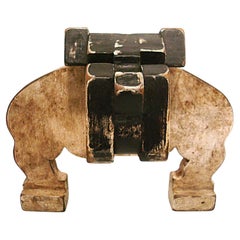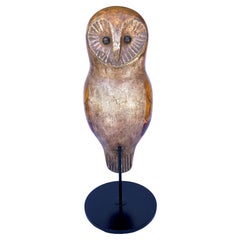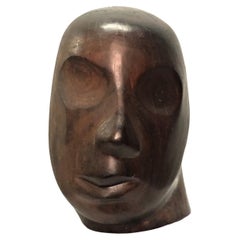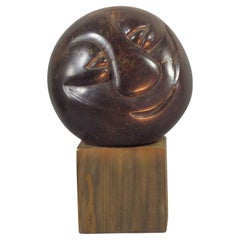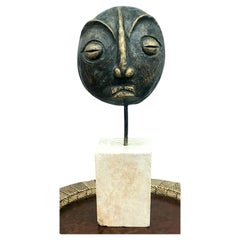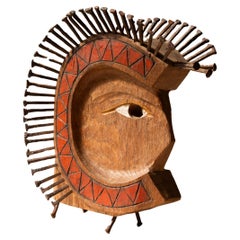Items Similar to Folk Art Sculpture of the Head of a Seal, South America, 1930´s
Want more images or videos?
Request additional images or videos from the seller
1 of 12
Folk Art Sculpture of the Head of a Seal, South America, 1930´s
$1,400
£1,062.86
€1,215.68
CA$1,956
A$2,175.50
CHF 1,135.98
MX$26,473.55
NOK 14,508.19
SEK 13,606.13
DKK 9,073.09
Shipping
Retrieving quote...The 1stDibs Promise:
Authenticity Guarantee,
Money-Back Guarantee,
24-Hour Cancellation
About the Item
Folk Art sculpture of the head of a seal. South America 1930´s.
The head is mounted over a brass base, as a way to exhibit it.
The head has several crack as you can see on the pictures. Overall very nice age patina.
We have specialized in the sale of Art Deco and Art Nouveau and Vintage styles since 1995. If you have any questions we are at your disposal. Pushing the button that reads 'View All From Seller'. And you can see more objects to the style for sale. Why are there so many antiques in Argentina?
In the 1880 – 1940 there was a grate wave of immigration encouraged by the periods of war that were taking place. 1st World War took place between 1914 and 1918 2nd World War took place between 1939 and 1945 The immigrants options were New York or Buenos Aires. Tickets were cheap and in Buenos Aires they were welcomed with open arms, as it was a country where everything was still to be done. Argentina was the country of new opportunities, labour was needed and religious freedom was assured, in many cases the of the family travel first until they were settled and then the rest of the family members join them. In the immigrant museum “Ellis Island Immigrant Building” in New York you can se the promotional posters of the boats that would take them to a new life. Between the years 1895 and 1896, Argentina had the highest DGP (gross domestic product) per capita in the world according to the Maddison Historical Statistics index, this situation arose due to the large amount of food being exported to European countries, which were at war. The Argentinean ships left the port of Buenos Aires with food, but they returned with furniture, clothes and construction elements, (it´s common to see this the old buildings of the historic neighbourhood of San Telmo, the beams with the inscription “Made in England)”, as well as many markets that were built in Buenos Aires, such us the San Telmo Market, whose structure was brought by ship and afterwards assembled in 900 Defensa Street. With the great influence of European immigrants living in the country, the children of the upper classes travelled to study in France, resulting in the inauguration of “La Maison Argentinienne”, on 27th of June 1928, in the international city of Paris, which hosted many Argentinians that were studying in Frace. It´s the fourth house to be built after France, Canada and Belgium, being the first Spanish-speaking one. Still in place today (17 Bd Jourdan, 75014, Paris, France). Many of the children of these wealthy families who attended international art exhibitions, museums and art courses abroad, took a keen interest in the European style. This is why Buenos Aires was at the time referred as “The Paris of South America”. Between the years 1890 and 1920 more than a hundred Palaces were built on Alvear Avenue the most exclusive avenue in Buenos Aires. Today some of these palaces have been transformed into museums, hotels and embassies. In the year 1936, the Kavanagh building was inaugurated, it was the tallest reinforced concrete building in South America. During 1994 the American Society of Civil Engineers distinguished it as an “international engineering milestone”, and it´s now considered a World Heritage of Modern Architecture. At the time was common to hire foreign architects such as Le Corbusier, who visited Buenos Aires/Argentina in 1929 and in 1948 he drew up the blueprints for a house built in La Plata City (which was declared a World Heritage Site). In 1947, the Hungarian architect Marcelo Breuer designed “Parador Ariston” in the seaside city of Mar del Plata. After an Argentinean student at Harvard University convinced him to come to Argentina. He worked on an urban development project in the Casa Amarilla, area of La Boca. The Ukrainian architect, Vladimiro Acosta, arrives in Argentina in 1928 and worked as an architect until que moved to Brazil. Antonio Bonet, a Spanish architect who worked with Le Corbusier in Paris, arrives in Argentina in 1937, where he carried out several architectural works and in 1938 designs the well-known BFK chair. Andres Kálnay, of Hungarian origin, made around 120 architectural masterpieces, among which the former Munich brewery stands out, he even made the furniture’s design. The German architect, Walter Gropius, director of the Bauhaus, lived in Argentina, where he wrote articles for “Sur” magazine and founded in Buenos Aires, an architectural firm with Franz Möller, who was also an architect, where he built two houses. At the same time several famous designers decided to immigrate to Argentina, among them we can find the well-known French designer, Jean-Michel Frank, who arrived in the country in 1940 and also worked for the Rockefeller family. Special pieces were made, which were sold exclusively in the country, such as the well-known German company “WMF”, who sold their products by catalogue, which were chosen by the ladies of high society in the list of wedding gifts, as well as the pieces designed by Christofle. The Swiss sculptor Alberto Giacometti, made special pieces for Argentinean mansions. In 1904 the first Jansen branch outside Paris was established in Buenos Aires, as the Argentinean clientele demanded a large amount of furniture, from the end of the 19th century to the mid-20th century. In 1970, the brand Rigolleau Argentina made pieces authorised by Lalique. The brands Maple and Thompson also set up shop in the country. The French plastic artist, Marcel Duchamp moved to Argentina in 1918-1919. Glass signed Gallé, Charder, Leverre, Schneider, Muller and other French firms. They were bought in flower shops and were given to ladies with beautiful floral arrangements. Some furniture manufacturers travelled to international fairs and bough the patterns to produce the furniture in Argentina, such as the furniture firm Englander and Bonta, who bought the patterns in Italy. It is worth mentioning that in Argentina we have the largest community of Italians outside of Italy, as it is estimated that 70 percent of the inhabitants have at least one Italian descendant, followed by Spanish immigrants. The most Important furniture stores in Argentina: Comte is founded in 1934 (under the direct management of Jean Michel Frank in 1940). Nordiska (Swedish company established in 1934). Churba in 1960, a company that brought foreign designers to present their furniture in the country: Denmark: (Arne Jacobsen, Finn Juhl, Bender Madsen, Ejner Larsen, Poul Kjaerholm, Hans Wegner) Sweden: (Hans Agne Jakobsson, Gustavsberg) United States: (Herman Miller) Finland: (Lisa Johansson, Folke Arstrom, Tapio Wirkkala, Alvar Aalto, Timo Sarpaneva) Swedish Factory: (Orrefors) Italy: (Littala, Vico Magistretti, Emma Gismondi, Gae Aulenti, Angelo Mangiarotti, Elio Martinelli, Gianna Celada, Angelo Mangiarotti, Mario Bellini, Carlo Scarpa) Finland: (Olivia Toikka) Plata Lappas (Lappas Silver): a goldsmith shop founded in 1887 in Argentina by Alcibiades Lappas of Greek origin. In 2019, in Argentina took place “the Art Deco world congress” . Argentina currently has more than 100 Art Deco buildings and another 90 Art Nouveau buildings throughout the city of Buenos Aires. Argentina is a country that has not been involved in many wars, which is why it has been a refuge for works of art and antiques from different periods of time, unlike European countries. That is way many collectors, museums and antique dealers from all over the world visit it, you should not miss the opportunity to visit this great country.
- Dimensions:Height: 9.65 in (24.5 cm)Width: 14.97 in (38 cm)Depth: 3.94 in (10 cm)
- Style:Folk Art (In the Style Of)
- Materials and Techniques:
- Place of Origin:
- Period:
- Date of Manufacture:1930s
- Condition:Wear consistent with age and use.
- Seller Location:Buenos Aires, AR
- Reference Number:1stDibs: LU2027331320452
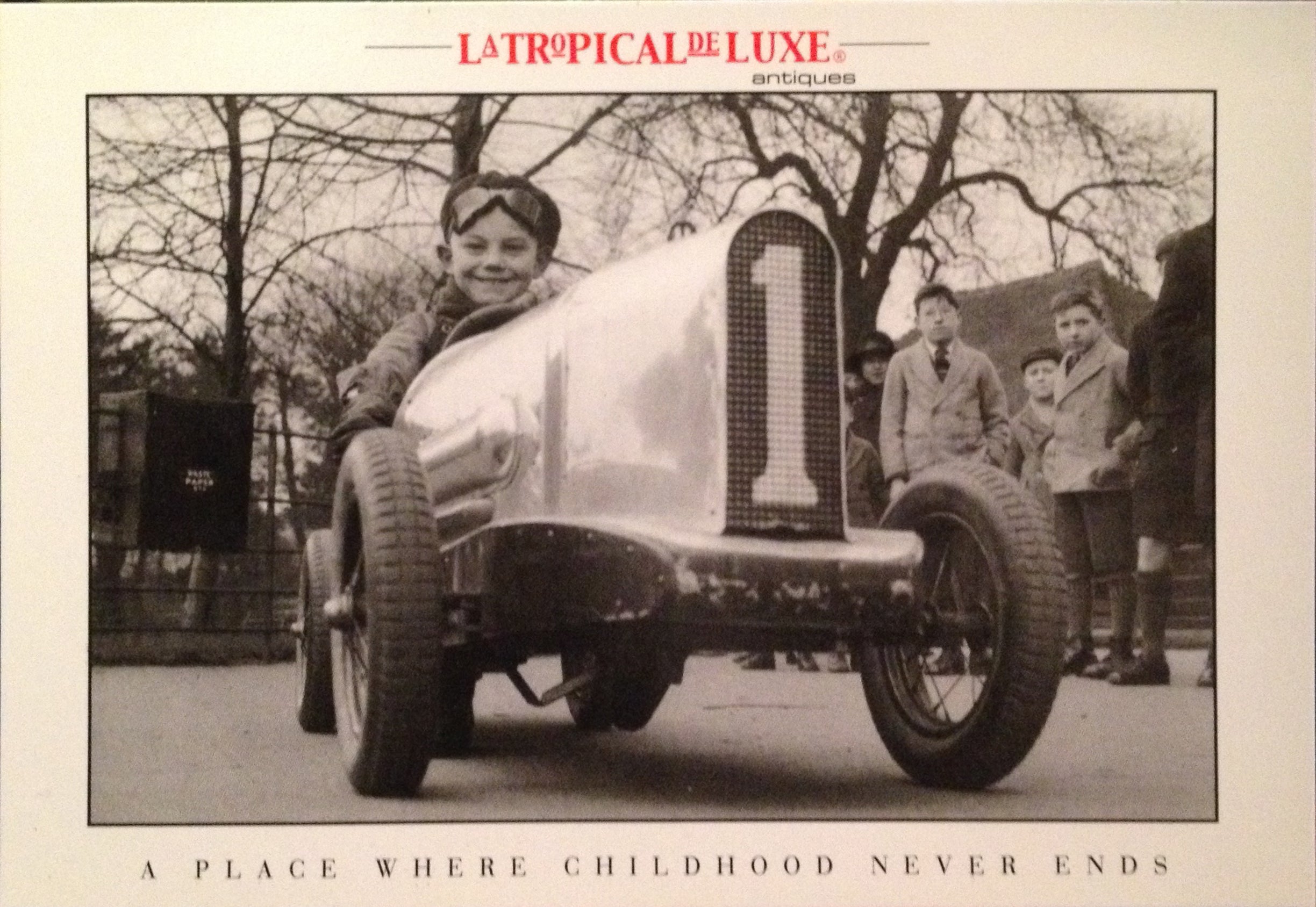
About the Seller
4.9
Vetted Professional Seller
Every seller passes strict standards for authenticity and reliability
Established in 2002
1stDibs seller since 2016
320 sales on 1stDibs
Typical response time: 1 hour
- ShippingRetrieving quote...Shipping from: Buenos Aires, Argentina
- Return Policy
Authenticity Guarantee
In the unlikely event there’s an issue with an item’s authenticity, contact us within 1 year for a full refund. DetailsMoney-Back Guarantee
If your item is not as described, is damaged in transit, or does not arrive, contact us within 7 days for a full refund. Details24-Hour Cancellation
You have a 24-hour grace period in which to reconsider your purchase, with no questions asked.Vetted Professional Sellers
Our world-class sellers must adhere to strict standards for service and quality, maintaining the integrity of our listings.Price-Match Guarantee
If you find that a seller listed the same item for a lower price elsewhere, we’ll match it.Trusted Global Delivery
Our best-in-class carrier network provides specialized shipping options worldwide, including custom delivery.More From This Seller
View AllMid-Century Wooden Face Sculpture of Two People Talking
Located in Buenos Aires, Olivos
Painted wooden faces over a stand. Rare sculpture of the people talking. Nice colors. It has no signature.
It was bought to a french family, everything in ...
Category
Mid-20th Century French Mid-Century Modern Abstract Sculptures
Materials
Wood
Folk Art Standing Owl Wooden Carved Sculpture
Located in Buenos Aires, Olivos
Lovely Folk Art wooden carved standing owlSculpture.
It has bone around the eyes. Small chip on the base.
We have specialized in the sale of Art Deco and Art Nouveau and Vintage st...
Category
Early 20th Century American American Colonial Animal Sculptures
Materials
Bone, Wood
1930's American Folk Art Wooden Bulldog Sculpture
Located in Buenos Aires, Olivos
1930's American Folk Art Wooden Bulldog Sculpture.
This is a wonderful Primitive Folk Art bull bog. A close look at the simplicity of design and constru...
Category
Mid-20th Century American Mid-Century Modern Animal Sculptures
Materials
Wood
Folk Art Carved and Painted Owl Decoy, USA, 1900's
Located in Buenos Aires, Olivos
Folk Art carved and painted owl decoy, USA 1900's
A decorative barn owl carving decoy
Original paint with even wear.
Mounted over a new iron stand.
We have...
Category
20th Century American Folk Art Sculptures and Carvings
Materials
Wood
Miguel Berrocal "Portrait de Michelle" Puzzle Sculpture, 1970´s
By Miguel Berrocal
Located in Buenos Aires, Olivos
This miniature bust of a woman is a three dimensional puzzle of incredibly precise craftsmanship. 17 individual pieces, are fitted in order to create the overall work, each piece nes...
Category
Late 20th Century Spanish Mid-Century Modern Figurative Sculptures
Materials
Bronze
Art Deco Bronze Sculpture Bust Woman Profile Guido Cacciapuoti 1930
By Guido Cacciapuoti
Located in Buenos Aires, Olivos
Stylish Art Deco bronze bust of a woman in profile.
Attributed to Guido Cacciapuoti.
The bronze has a silver patina and stands on a green marble base.
Italy 1930-1940.
We have speci...
Category
Mid-20th Century Italian Art Deco Figurative Sculptures
Materials
Marble, Bronze
You May Also Like
Head, French Modernist Hand-Carved Wood Sculpture, ca. 1950
Located in New York, NY
Unusual in its conciseness and modernistic vision of a rather familiar subject - the human head - this original elegant sculpture does not leave anyone indifferent and is imprinted i...
Category
Vintage 1950s French Mid-Century Modern Abstract Sculptures
Materials
Wood
Shona Head Sculpture Carved Stone Kumberai Mapanda, circa 1970
Located in Ottawa, Ontario
Kumberai Mapanda (1940-)
Small head.
circa 1970.
Carved serpentine stone
5 1/4" in. (13.4 cm.) high, excluding base.
Shona sculpture is the name given
to a modern move...
Category
Late 20th Century Zimbabwean Modern Figurative Sculptures
Materials
Stone
Mid Century Head Sculpture
Located in Los Angeles, CA
Mid century bronze sculpture of the head
Marble base is. Vintage condition.
Category
Vintage 1960s Spanish Mid-Century Modern Natural Specimens
Materials
Marble, Bronze
Art Brut Head Sculpture, Folk Art Male Profile in Carved Wood and Steel 1980s
By Robert Tatin
Located in ROUEN, Normandie
Art Brut Head Sculpture, Folk Art Male Profile in Carved Wood and Steel 1980s
Impressive Head / Male Profile sculpture carved in oak wood.
Hand-carved with a gouge, the piece showc...
Category
Late 20th Century French Folk Art Figurative Sculptures
Materials
Steel, Iron
Hand Carved Exotic Wood Abstract Animal Sculpture
Located in Chula Vista, CA
Hand Carved Wood Animal
4.25 h x 7.75 w x 4.25
Original vintage condition
Refer to images listed
Category
Mid-20th Century Mid-Century Modern Animal Sculptures
Materials
Wood
Bamana Mask on a Custom Wooden Stand
Located in Long Island City, NY
Bamana Mask on a custom ebony wood stand.
Category
20th Century Malian Figurative Sculptures
Materials
Wood
More Ways To Browse
Used American Drew Furniture
A Johansson Art
17 South Antiques
1930s Furniture New York
Comte Argentina
Maison Jansen Argentina
Argentina Travel Poster
Christofle America
Nordiska Argentina
1930s Spanish
South America Vintage Posters
Vintage American Drew Furniture
Argentina Vintage Poster
Brass Seals
Head Sculpture On Stand
1930s Wood Sculpture
Art Glass Seal
Art Deco Seal
